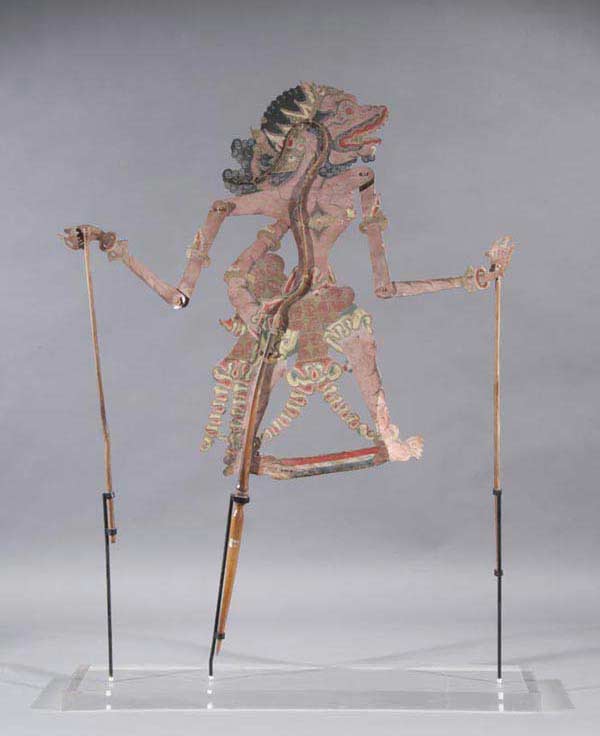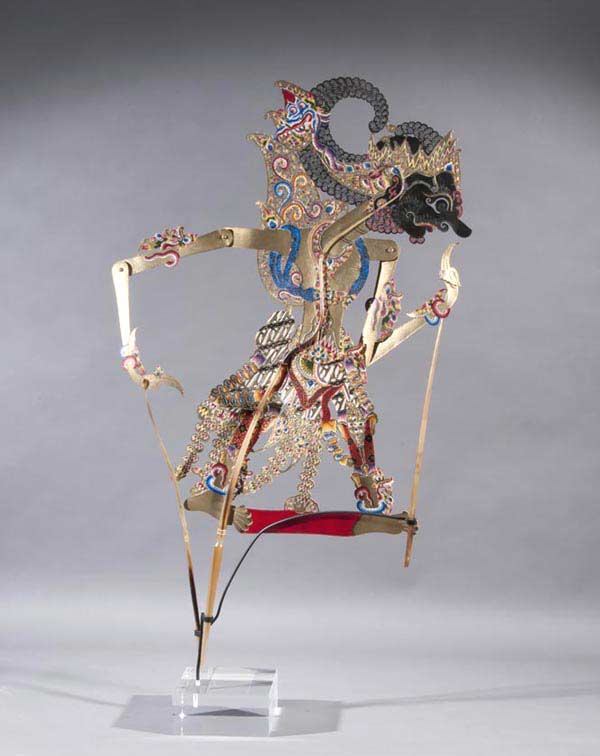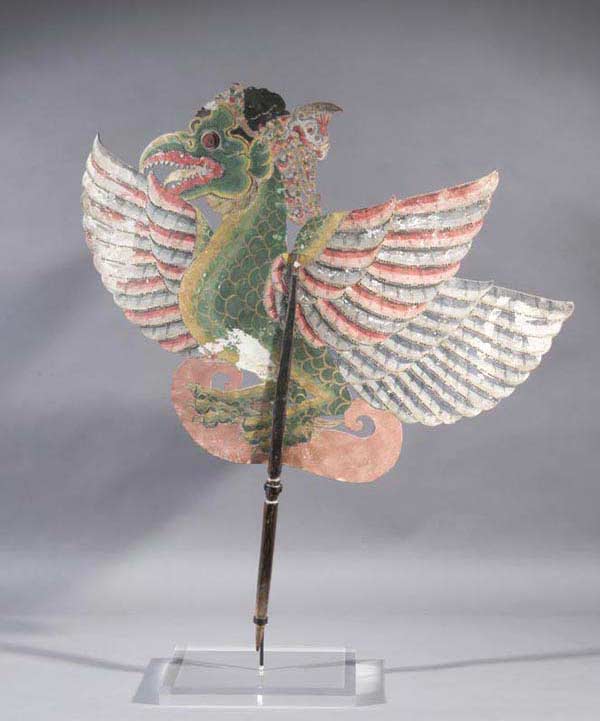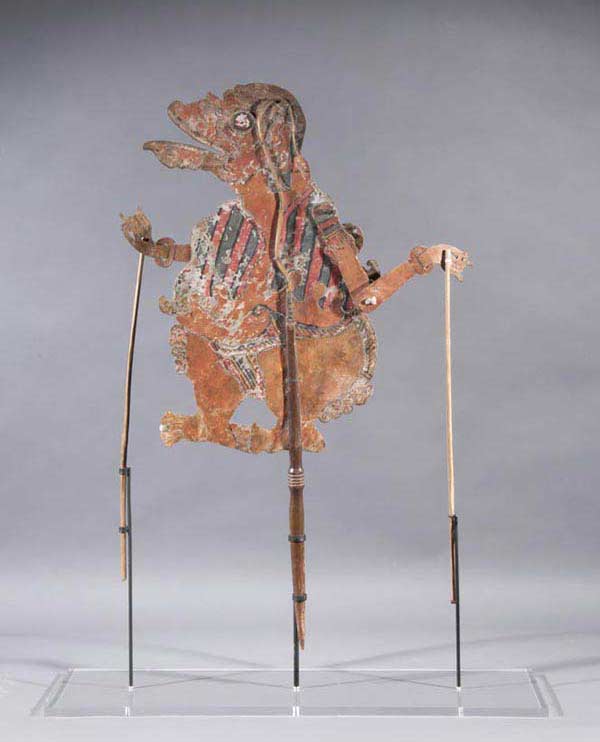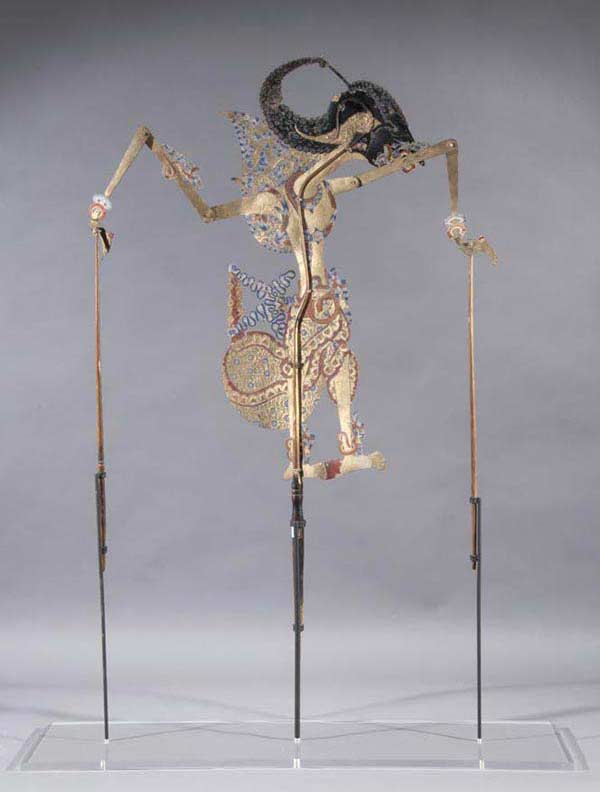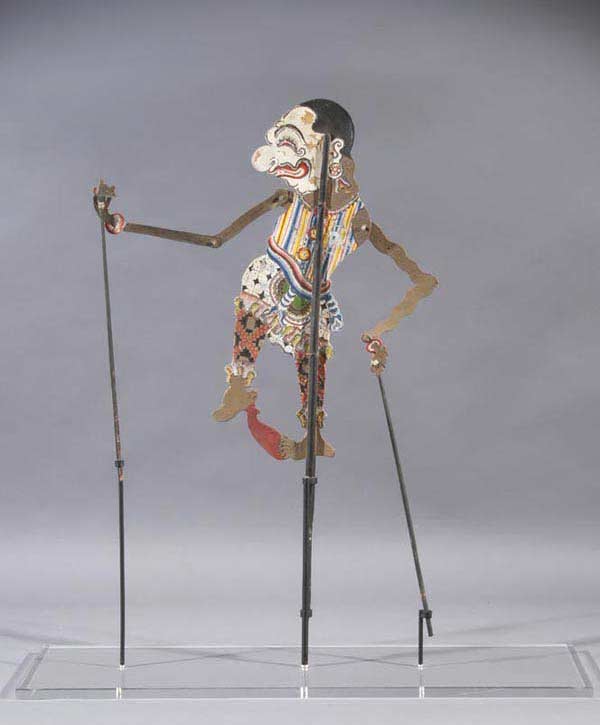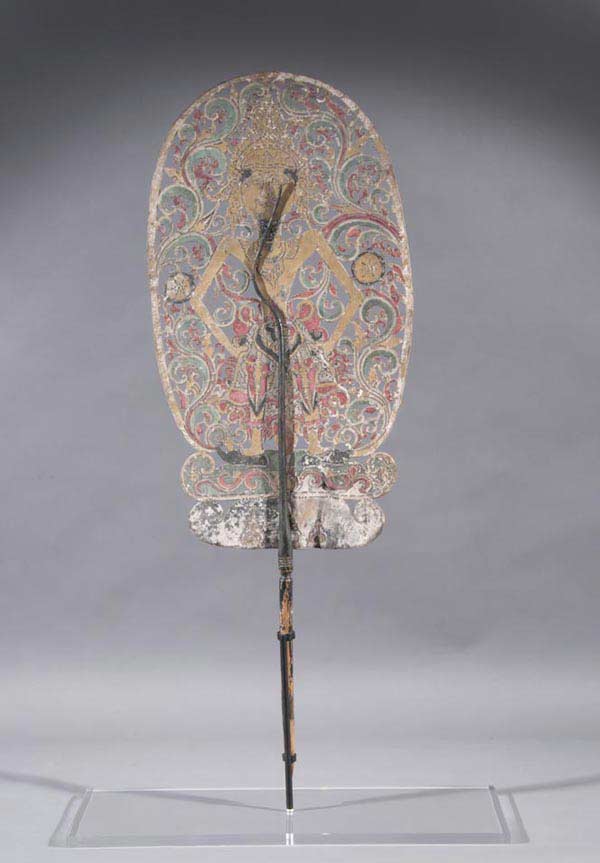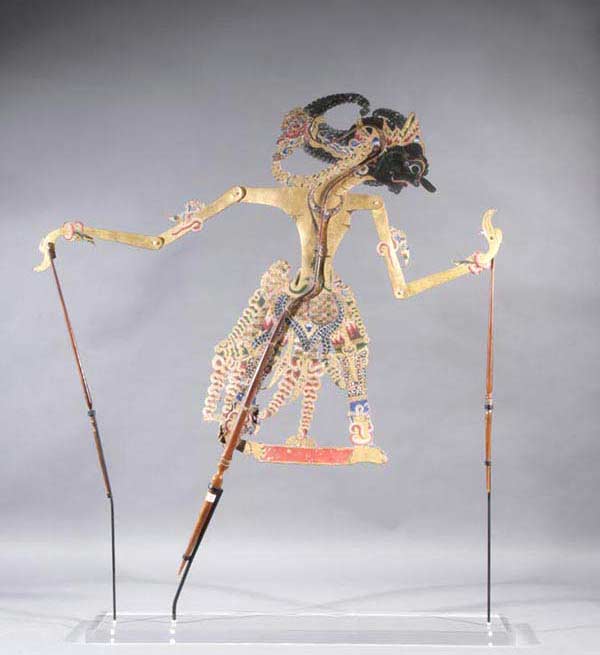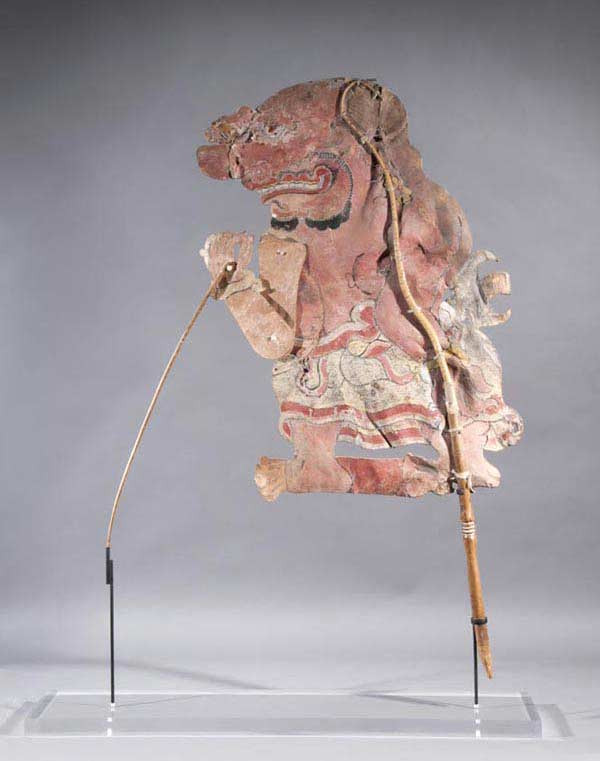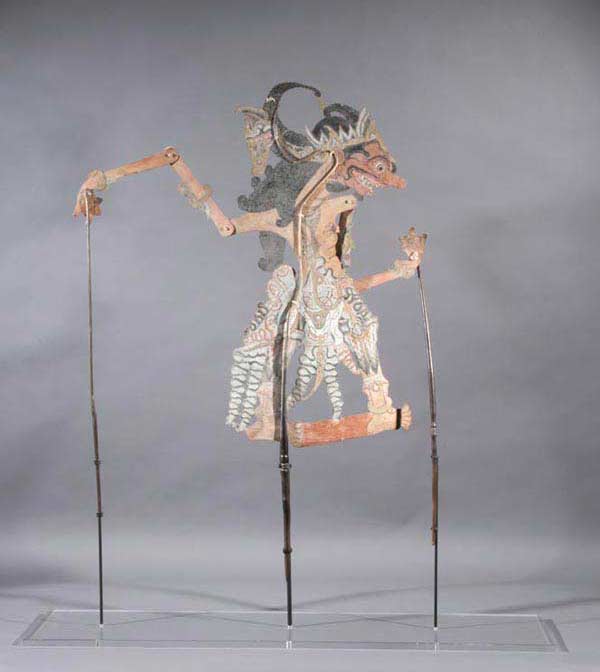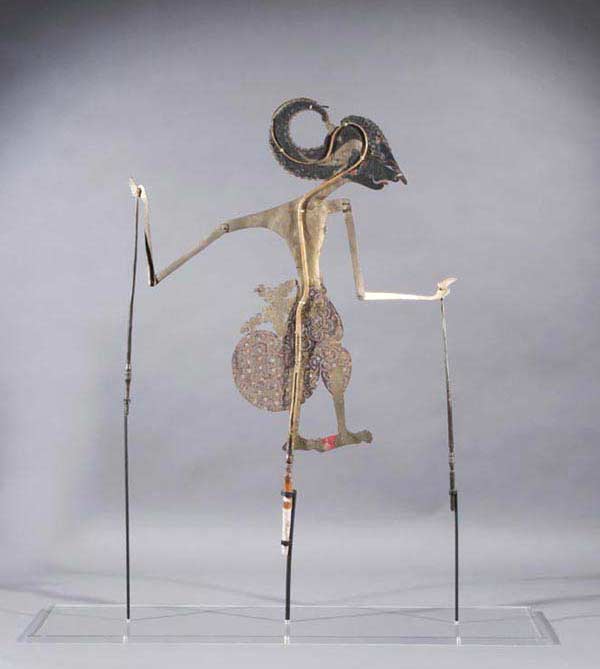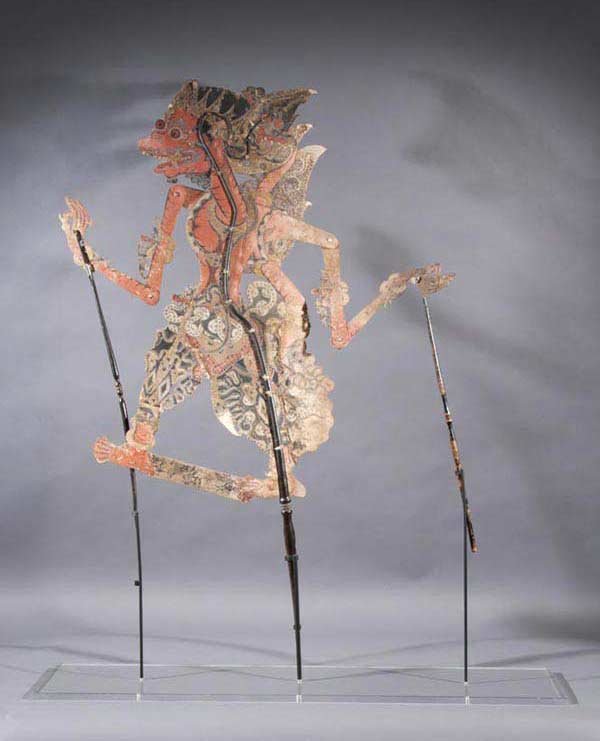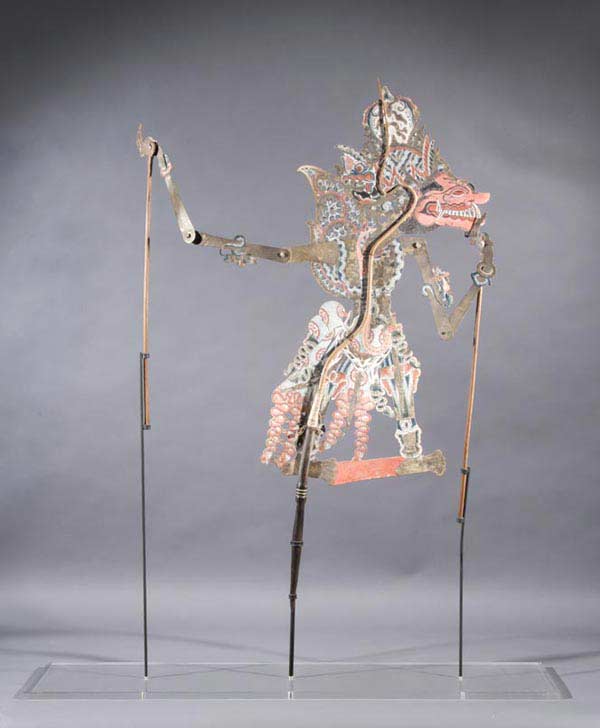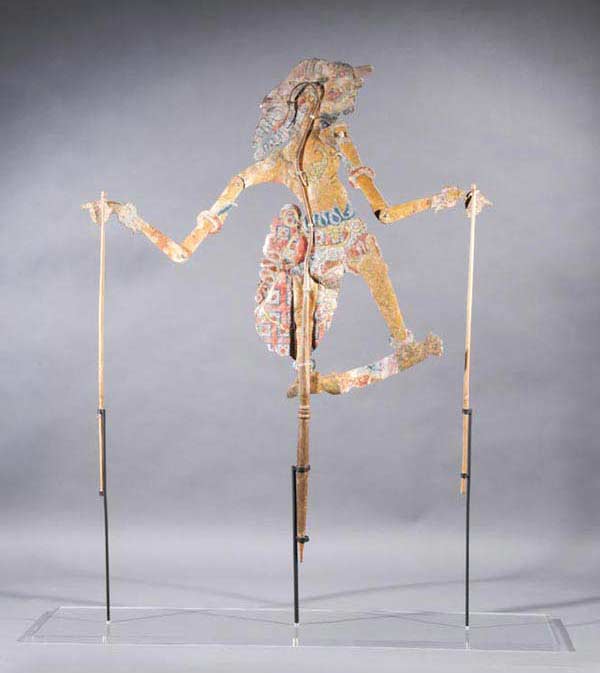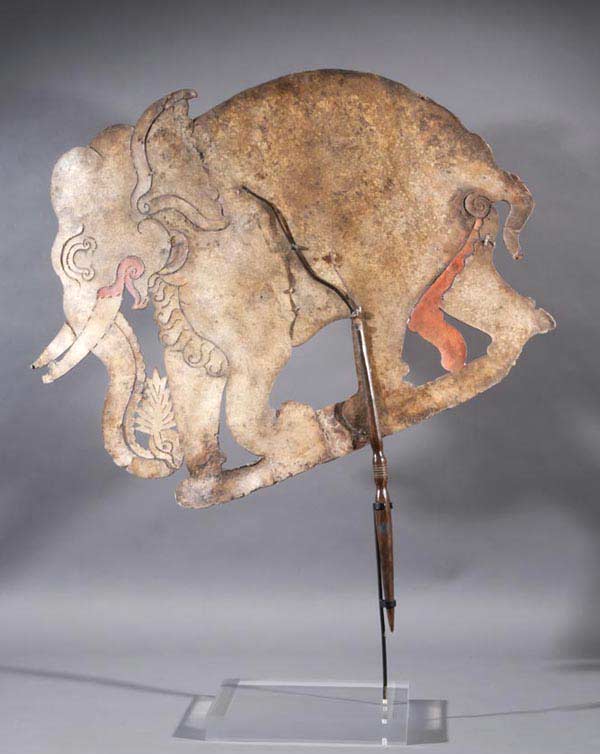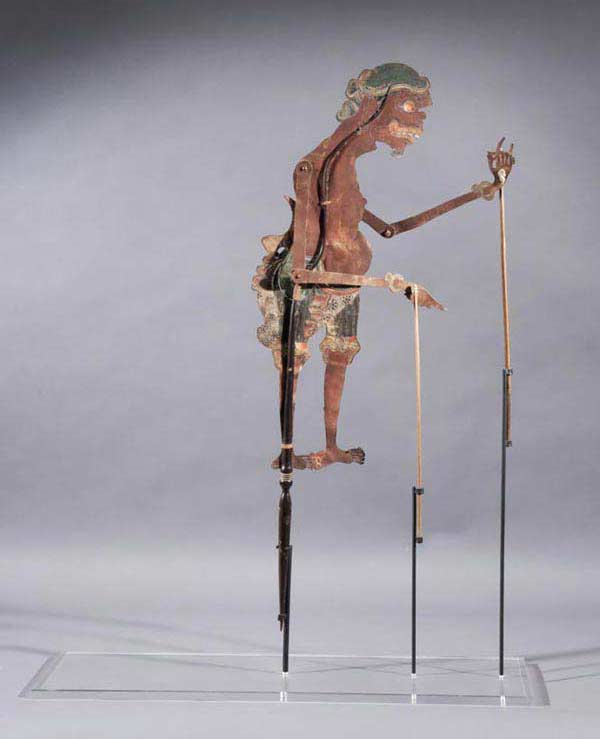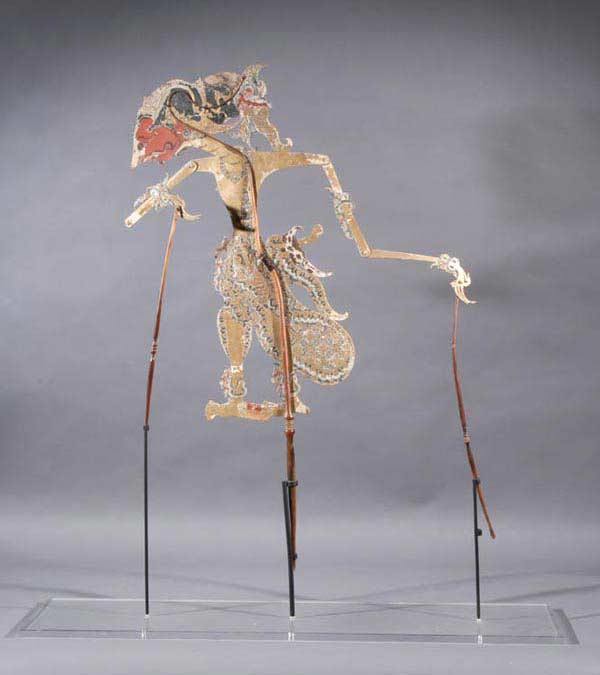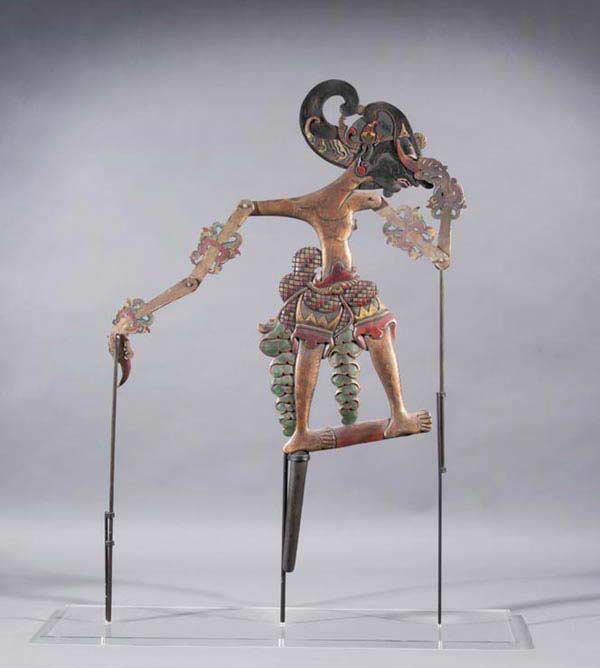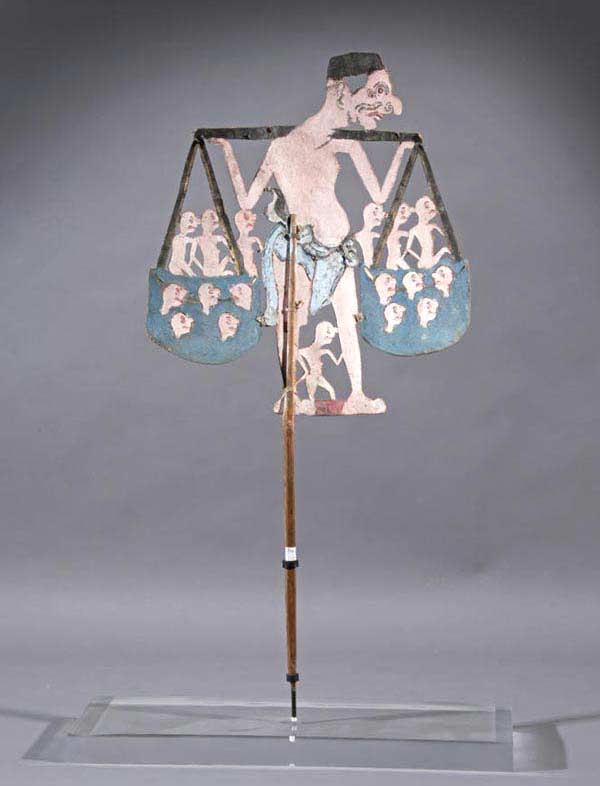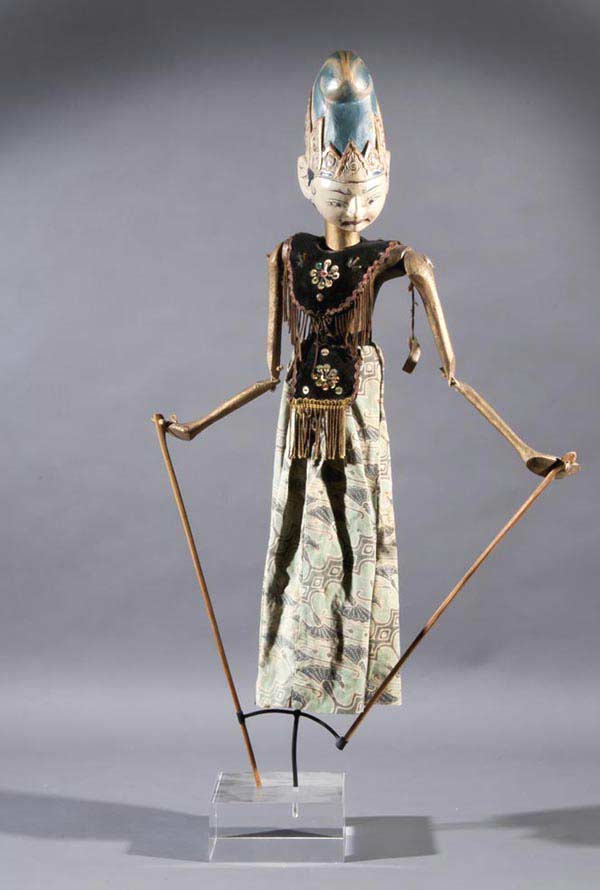Ephemera
Collection IndexShadow Puppets
Collection
Twenty one Shadow Puppets
- Java, 19th century
Polychrome parchment, wood, fabric, bone & bamboo
There are three distinct shadow play traditions in the world which are to
be found in Java & Bali, certain parts of mainland South East Asia &
India. The shadow plays in Java draws on a common heritage of Indian culture
& stories borrowed from Indian epics such as the Ramayana & the Mahabharata.
A shadow play is one of the world’s most complex& refined dramatic&
theatrical forms, having developed through an unbroken session of artists,
generation by generation, for more than a thousand years. JJavanese shadow
plays are known as 'Wayang Purwa' & are elaborate performances lasting
throughout the night.
The puppets 'Wayang Kulit' are made from animal hide, usually that of a buffalo.
They are said to be made of leather, this term is incorrect. The material
is parchment.
These puppets are richly decorated & coloured, since originally one half of the audience, the men, would sit on the side of the screen where the actual puppets could be seen, while the women watched the shadows. The puppets are stylized versions of people, with the head and hair being particularly prominent, since it is normally these attributes which are used to identify the different characters. No other shadow puppets outside Java have anything resembling their most striking characteristics: very long necks, the unnaturally extended shoulders & the excessively long arms.
It is believed that the stylised shapes of the wajang kulit puppets date from the sixteenth century & are credited to the Moslem Sunan of Giri who is suppose to have ordered a non-realistic puppet set made in order to circumvent the Islamic proscription against portrayal of the human form in art.
The form of language used in wajang kulit is a blend of Sanskrit, old Javanese (kawi) and colloquial language.
Each puppet is manipulated by a single person the Dalang who also provides the voice. An orchestra, consisting of gongs, drums and tuned percussion instruments, accompanies the action - it is known as a gamelan. Gamelan music is essential to the performance as it provides cadence to which puppets move across the screen, take their places in the banana-log stage & fight.
For comparative shadow puppets see;
Javanese Shadow Puppets by Jeune Scott-Kemball, British Museum 1970
'On Thrones of Gold' - James R Brandon, Harvard University Press, 1970

